Things we like
- Sheer driver focus
- Massive amounts of downforce and chassis configurability
- Looks and sounds completely unhinged
Not so much
- Track focus brings some compromises on the road
- $120K+ price rise over previous GT3 RS
- Needs a race circuit
Okay, fish out of water time. Given the extreme track focus of the latest Porsche 911 GT3 RS, you might be expecting this review to include some balls-to-the-wall laps around a circuit.
One with many high-speed corners, like Silverstone or Phillip Island, would make sense given this new car’s obvious focus on aerodynamics, but no… in a shock twist, you’ll find no track driving here.
Instead our plan is to answer a more pressing question that surrounds the GT3 RS: what’s it like as a road car? We already know it’s a monster on a circuit – it’s now bulging with so many complex driver aids and is so hellbent on generating downforce that it might actually be Porsche’s wildest and most track-focused creation yet.

But what we don’t know is how it performs away from the smooth confines of a racetrack. Is it the pick of the 911 range?
The pinnacle of real-world driving thrills? Or has it become so hard-edged and focused that it feels too extreme for the street? Fish, water… ah you get it.
Happily, we have just the roads to give the new GT3 RS a proper workout. Our plan is to collect the car from Porsche’s Melbourne HQ and then head south-east towards Gippsland where we’ll tackle the roads we use for Car of the Year testing.
It’s a challenging loop – one full of low- and high-speed corners and surfaced with gnarled, bumpy tarmac – but even before we set off, I start to question the sanity of our plan.

Crikey this car looks wild. It’s the rear wing you notice first, naturally, and it’s somehow even larger and more absurd in person than it is in pictures, but the rest of the car is just as dramatic.
There are blade-like fins on the roof, huge cut-outs in the carbon bonnet, and gulping voids behind the front wheels that are so large you can see a big chunk of the tyre itself. There are loads of details to geek out over, too, like the expensive-looking forged magnesium wheels and the pneumatic cylinders that operate the rear wing’s drag reduction system (DRS).
Is it pretty? That depends who you ask – one passerby was bold enough to call it ugly – but there’s certainly beauty in the sheer single-mindedness of the design.
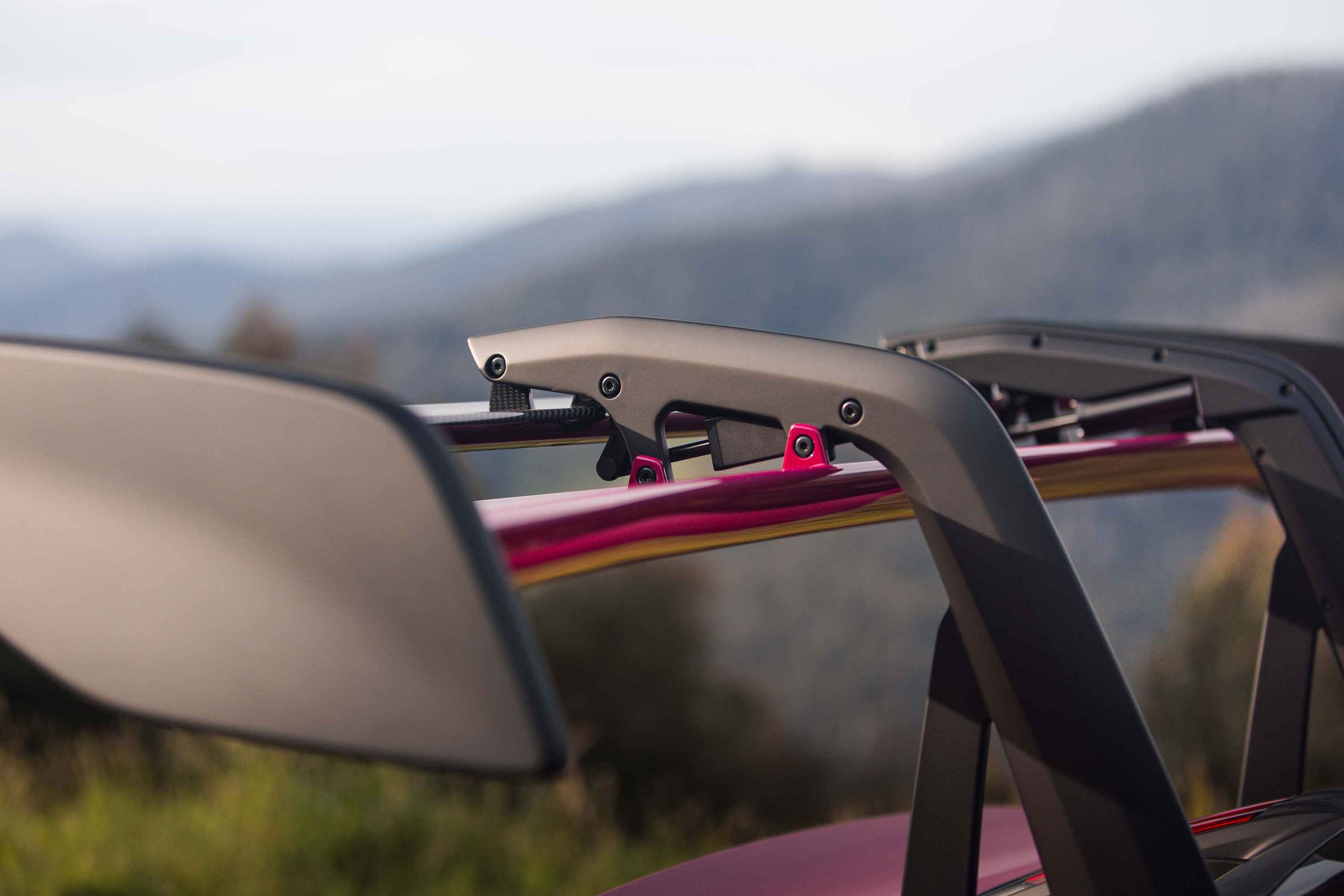
Every inch has been honed to generate downforce and the result is some dizzying numbers. At 280km/h, the GT3 RS is generating 860kg of aero grip, which is three times more than a ‘regular’ 911 GT3, and a chunk more than its key rivals.
A Lamborghini Huracán STO, for example, which is the most track-focused Huracán you can buy, makes 420kg of downforce at the same speed as the Porsche. A Mercedes-AMG GT Black Series makes 400kg at 250km/h and even a McLaren Senna can only muster 800kg at 325km/h.
The Porsche’s colossal rear wing is a heavy contributor, of course, but an equally crucial element is a new central radiator design. This deletes the previous three-radiator layout and instead frees up space on either side of the nose to better channel air down the side of the car.

Total outputs are now 386kW at 8500rpm and 465Nm at 6300rpm
The compromise is the single radiator now occupies the luggage compartment, meaning there’s no boot, but the goal is to dispel as much hot air as possible outwards while keeping the centre of the car free for dense, cool air to rush into the gulping intake for the 4.0-litre naturally aspirated flat six.
The powertrain itself is largely the same 4.0-litre and seven-speed PDK combo you get in a GT3 but changes to the cylinder heads, valve timing and camshaft have liberated an extra 11kW. Total outputs are now 386kW at 8500rpm and 465Nm at 6300rpm, with that torque figure actually being 5Nm less than the GT3.
The 0-100km/h sprint is dispatched in 3.2 seconds, which is two tenths quicker than a GT3 – thanks in part to different gearing and a shorter final drive – while top speed has fallen slightly from 318km/h to 296km/h. Blame drag for that one.
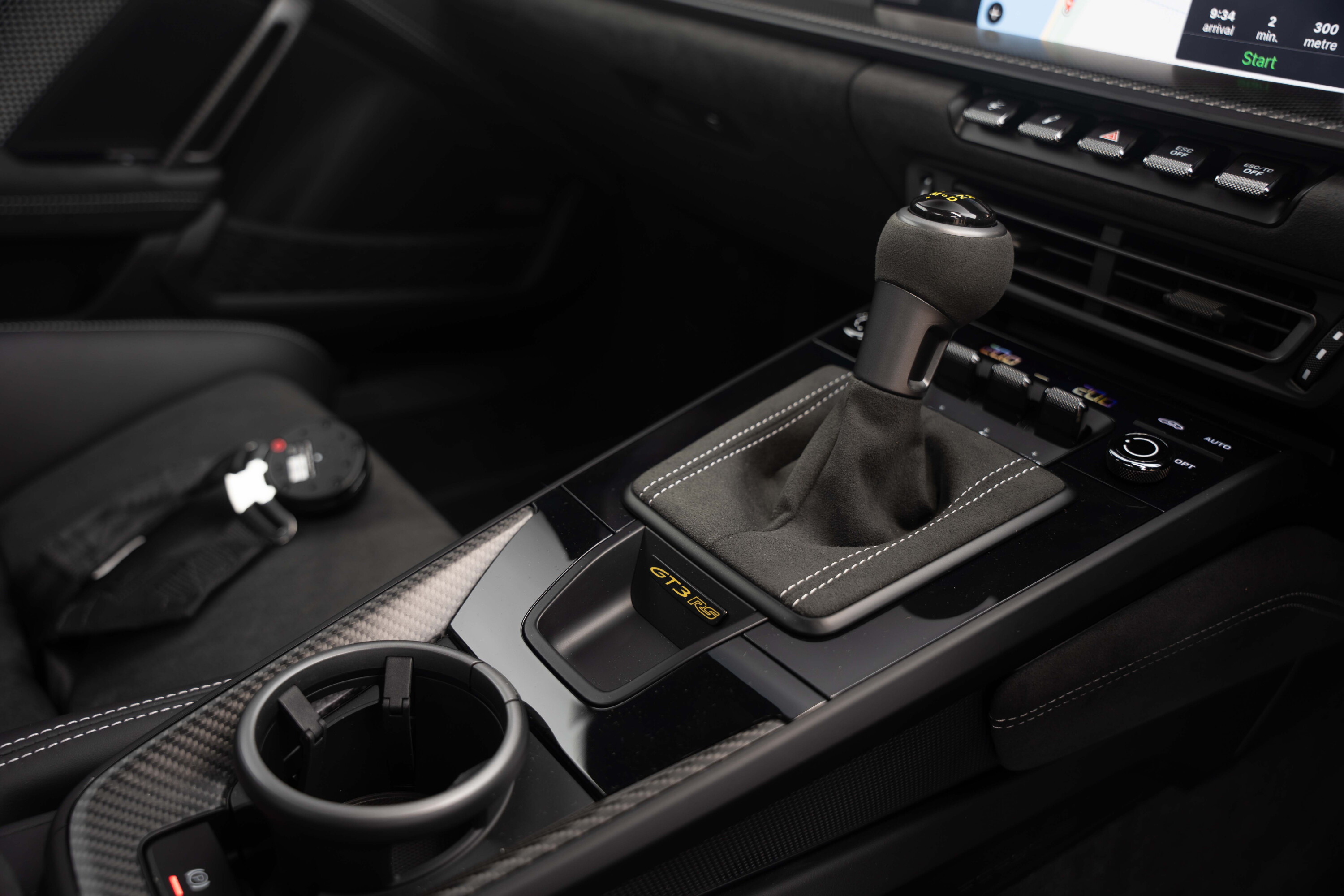
Slipping inside only reinforces the sense of focus. Our car is fitted with the optional Weissach Pack which, for $76,000 extra, adds a carbon-weave finish for the bonnet, roof and rear wing,) and forged magnesium wheels.
It also swaps out the standard steel roll cage for one made of carbonfibre, which looks fantastic and is a world-first, according to Porsche.
If the Weissach pack sounds a touch exxy, then brace yourself for the price of the actual car, which starts at $537,600. That’s a whopping $120K leap over the old GT3 RS and that’s before you get into the options list. Our test car cost $670,660 before on-road costs. Yikes.
The rest of the cabin is a rich mix of carbon, soft leather and black race-tex. While the layout is typical 911 – there’s no option to delete the stereo or air conditioning for this generation – it’s the detailing the sets the RS apart.
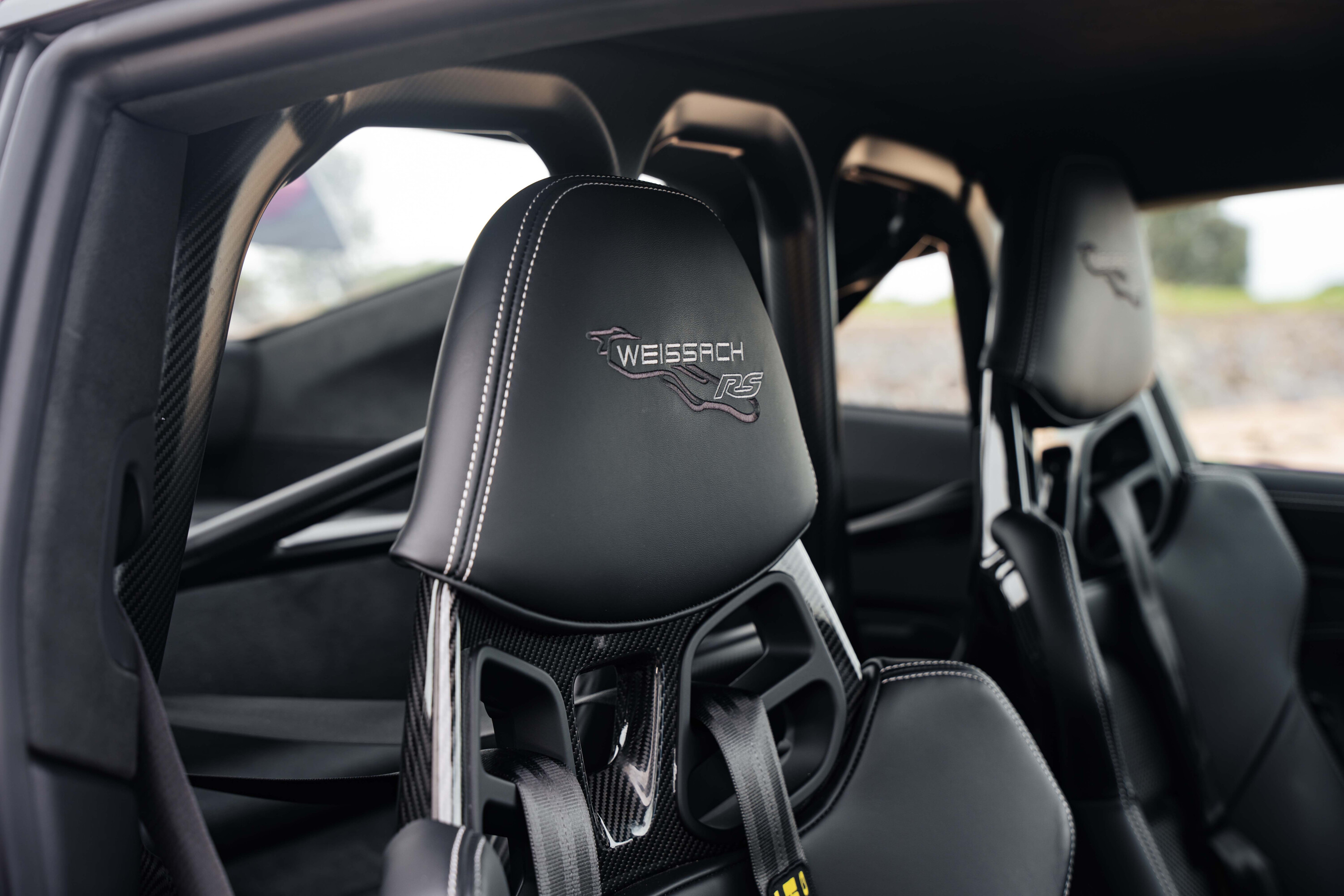
Each door pull is a slender spar of exposed carbon, the seats are lightweight carbon buckets and the tactility of the shift paddles, which are naturally made of carbon, is different thanks to a magnetised action that delivers a louder, metallic ‘clack’ with each gear change.
Then you notice the rotary dials hanging from the steering wheel. There are four of them and they’re the keys to unlocking the RS’s dizzying amount of adjustability. Everything from the suspension’s bump and rebound, to the level of traction-control intervention, and even the rate of locking for the differential on the way into and out of corners, can be fine-tuned by the driver.
This customisation could also be the secret to giving an obviously track-focused car decent road manners, given the damping’s softest setting – there are eight levels of firmness – will deliver more compliance than simply leaving the car in default.
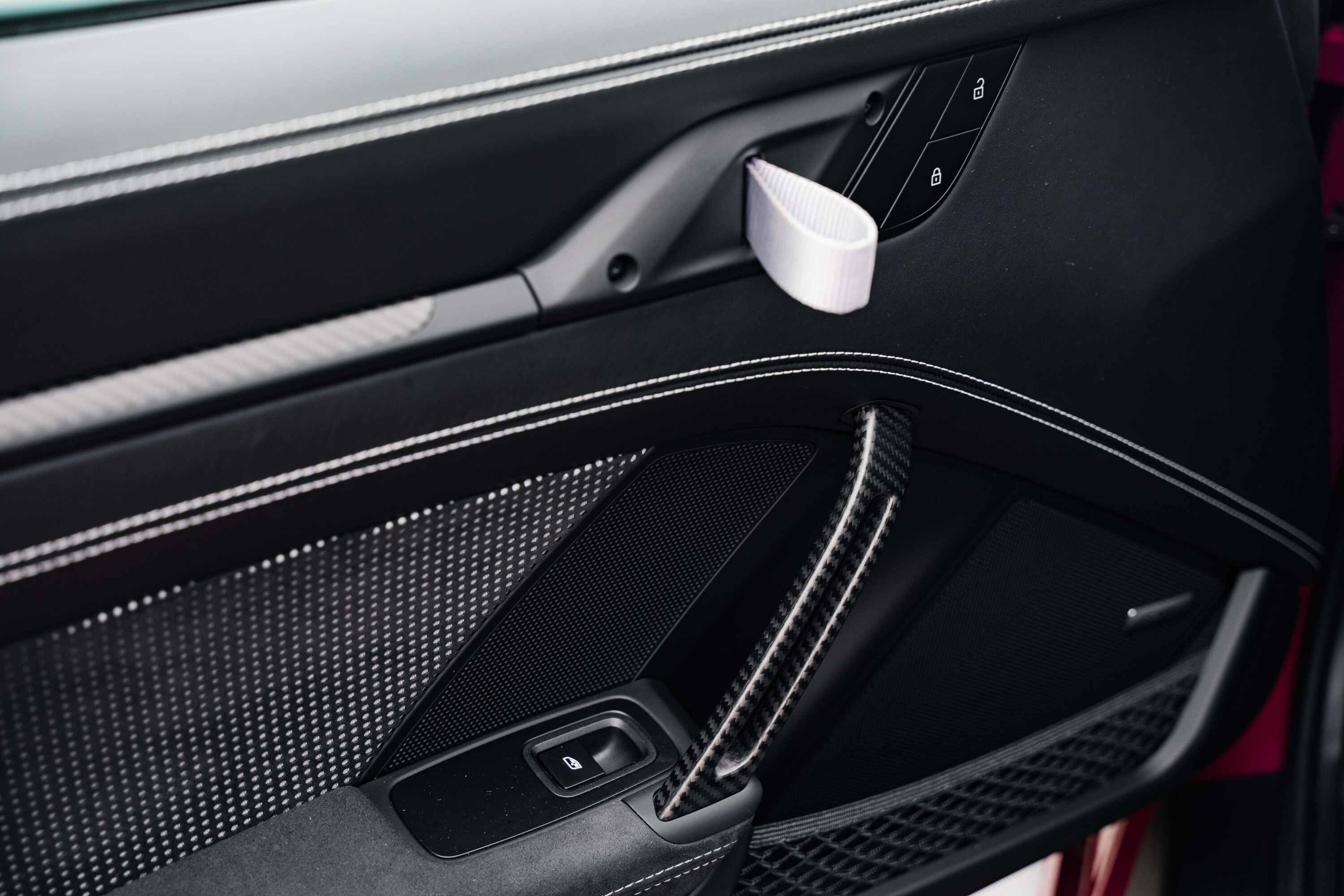
Seeing a GT3 RS trundle past is akin to having an Apache gunship buzz your local shopping centre
How does all this feel in city traffic? Like overkill of course. Seeing a GT3 RS trundle past is akin to having an Apache gunship buzz your local shopping centre and it only takes one join in the tarmac to understand this is a properly serious machine.
The whole car feels rigid and unyielding, with zero slack to the controls. Surprisingly, the low-speed ride actually isn’t that bone-jarring – there’s deftness to the damping and the wheels never crash through, even over large potholes.
And Porsche is the master at making high-performance transmissions feel docile and smooth at low speed. Okay, the seven-speed dual-clutch can jolt and clunk a bit when the car is cold, but get some heat through the system and the gearbox is as smooth and seamless as an i30 N.
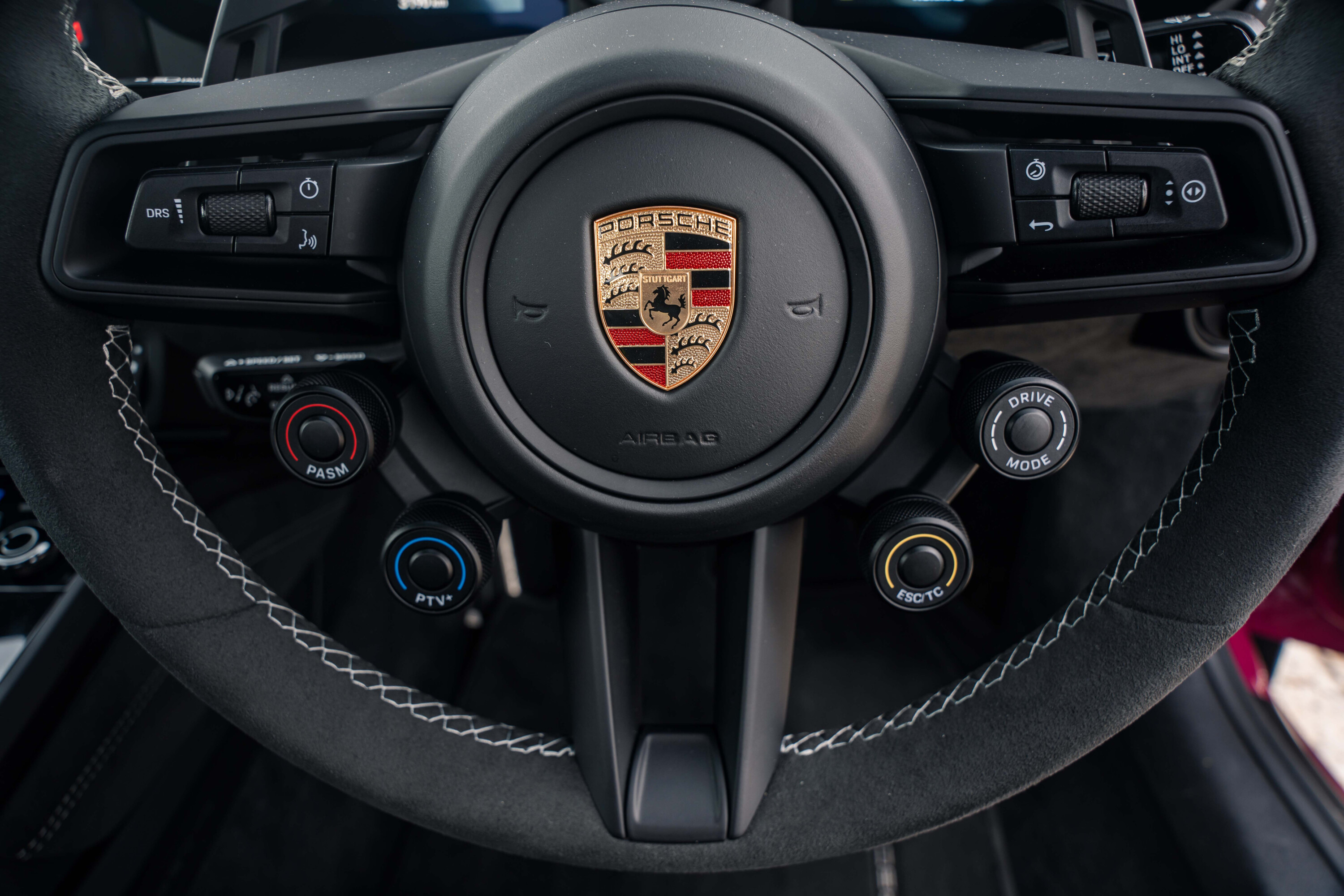
The RS is another level of focus entirely but it’s good to know its ultra-firm chassis won’t chip your teeth
Predictably, there’s plenty of tyre noise on the freeway (the Goodyear Eagle F1 R rubber measures 275 wide up front/335 out back) and the chassis is stiff enough that you’ll feel your squishy bits jiggle occasionally, but the bucket seats are a triumph of comfort and support. We drove the car all day and didn’t have a skerrick of leg or back pain.
Is it just as comfortable as a regular GT3? Not even close. The RS is another level of focus entirely but it’s good to know its ultra-firm chassis won’t chip your teeth or turn your skeleton to dust on a long road drive.
The view out verges on hilarious thanks to the hulking shape of that huge wing in the mirrors. The wing itself is so tall it doesn’t actually impede on rear vision, but it’s fun to watch the top element move when you switch the DRS between its high- and low-downforce settings.
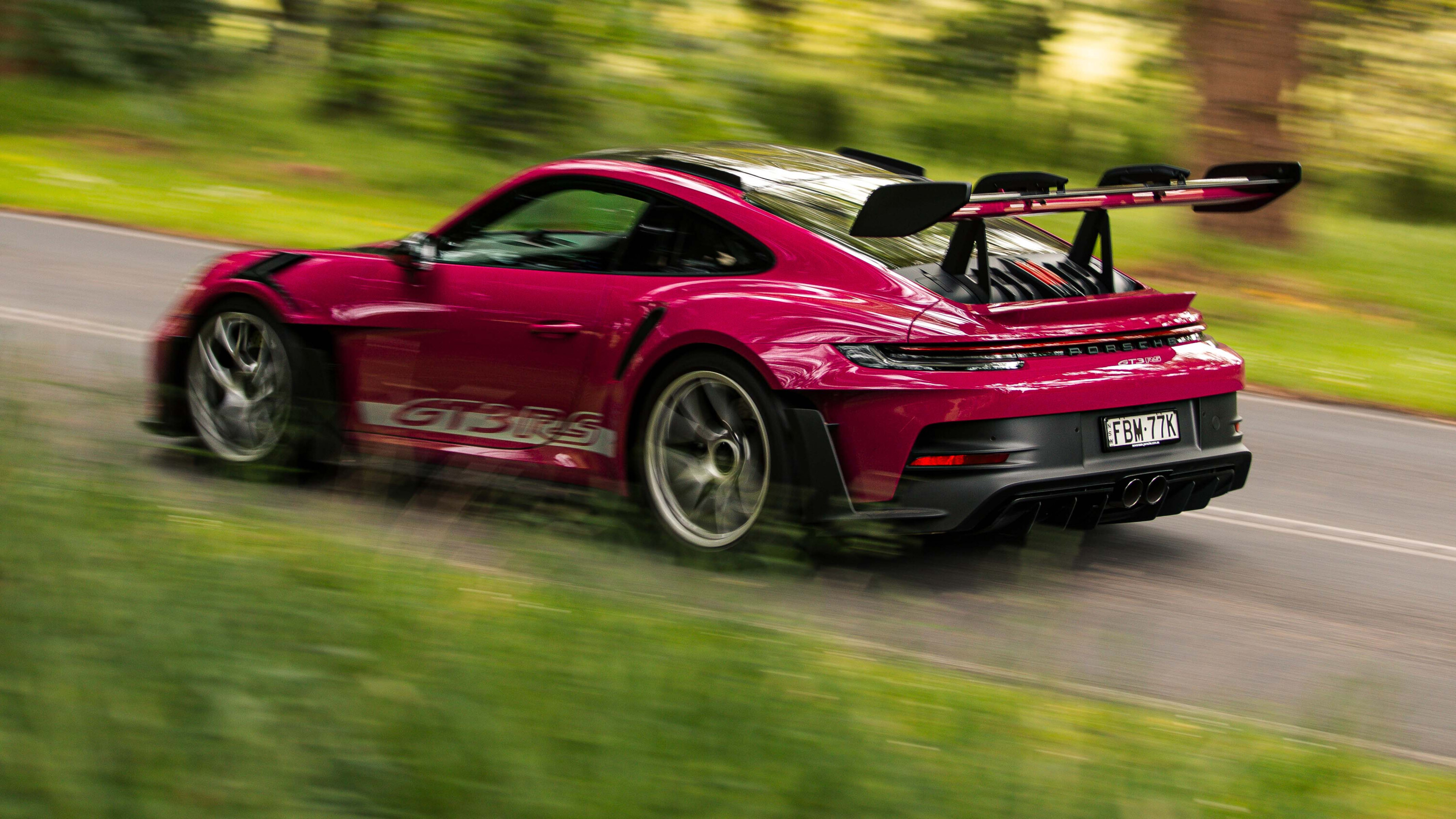
The system works automatically above 100km/h and 95 percent throttle or, for the full race racing-driver experience, you can open and close the wing’s top element yourself via a DRS button on the steering wheel.
Again, it feels like overkill on the M1, but the RS experience starts to coalesce once the road gets twisty. The steering is close to perfection. Meatily weighted and with a natural speed, there’s no vagueness or sneeze factor to contend with here. Just total obedience and clarity.
And once you get some heat into the track-focused Goodyears, the grip on offer from the front axle feels utterly resolute. I shudder to think what it’d be like when its cold and rainy – challenging, most likely – but today, the way the RS’s nose dives into corners is deeply addictive.

I only encountered the dreaded shudder of understeer once and only because I deliberately wound on the lock at a hairpin to see when the grip would run out.
The rear axle isn’t quite as tied down. The 4.0-litre flat-six might ‘only’ produce 386kW (absurdly, that figure seems modest in an age of 500kW+ rivals), but it’s still easy to overwhelm cold rear tyres if you get a bit greedy with the throttle on corner exit. Build some heat into the rubber and you can be much more decisive but there’s another issue to contend with — actually keeping the tyres in contact with the road.
Sucked in by the grippy front axle and telepathic steering, it’s staggering how quickly my confidence and speed build, until I hit a series of bumps that sends the rear skipping wide.
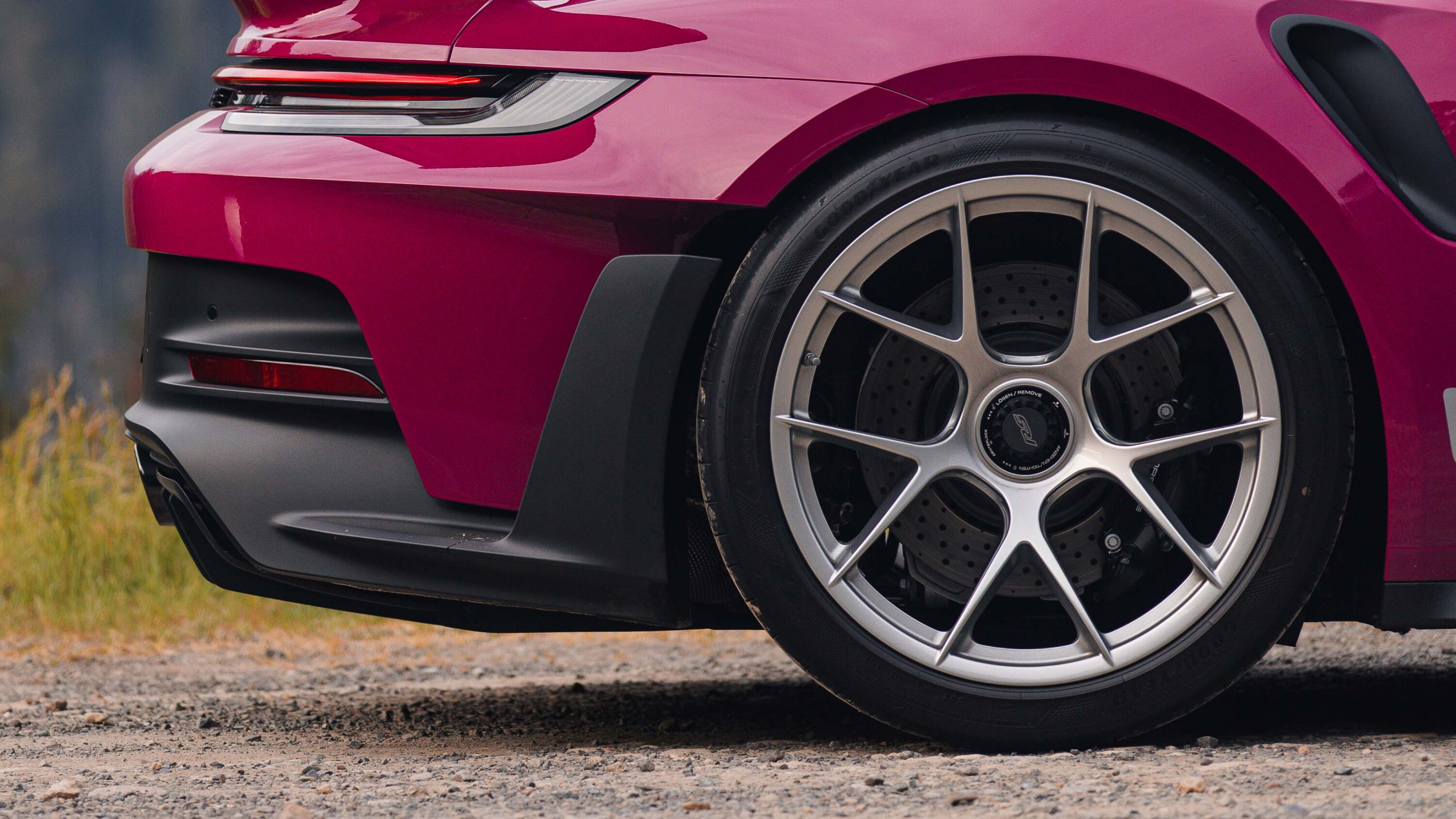
It’s a vicious moment, a proper bum puckerer, and a vivid reminder of just how stiff and snatchy this car has become.
Dialling the damping into a softer setting helps – the spread between soft/hard is noticeable but not day-and-night different – though I soon find myself leaving a margin in the RS that I wouldn’t in the more forgiving GT3 or more softly sprung GT4 RS. Where those cars can be properly exploited on bumpy backroads, the 3 RS demands more respect and bravery.
Happily, the standard steel brakes are absolutely mighty (carbon discs are optional) and the engine, even at sensible speeds, is a proper event. Porsche’s 4.0-litre is one of the world’s best engines and while the RS’s changes are small, the shorter gearing helps to make it feel even more urgent and evocative.
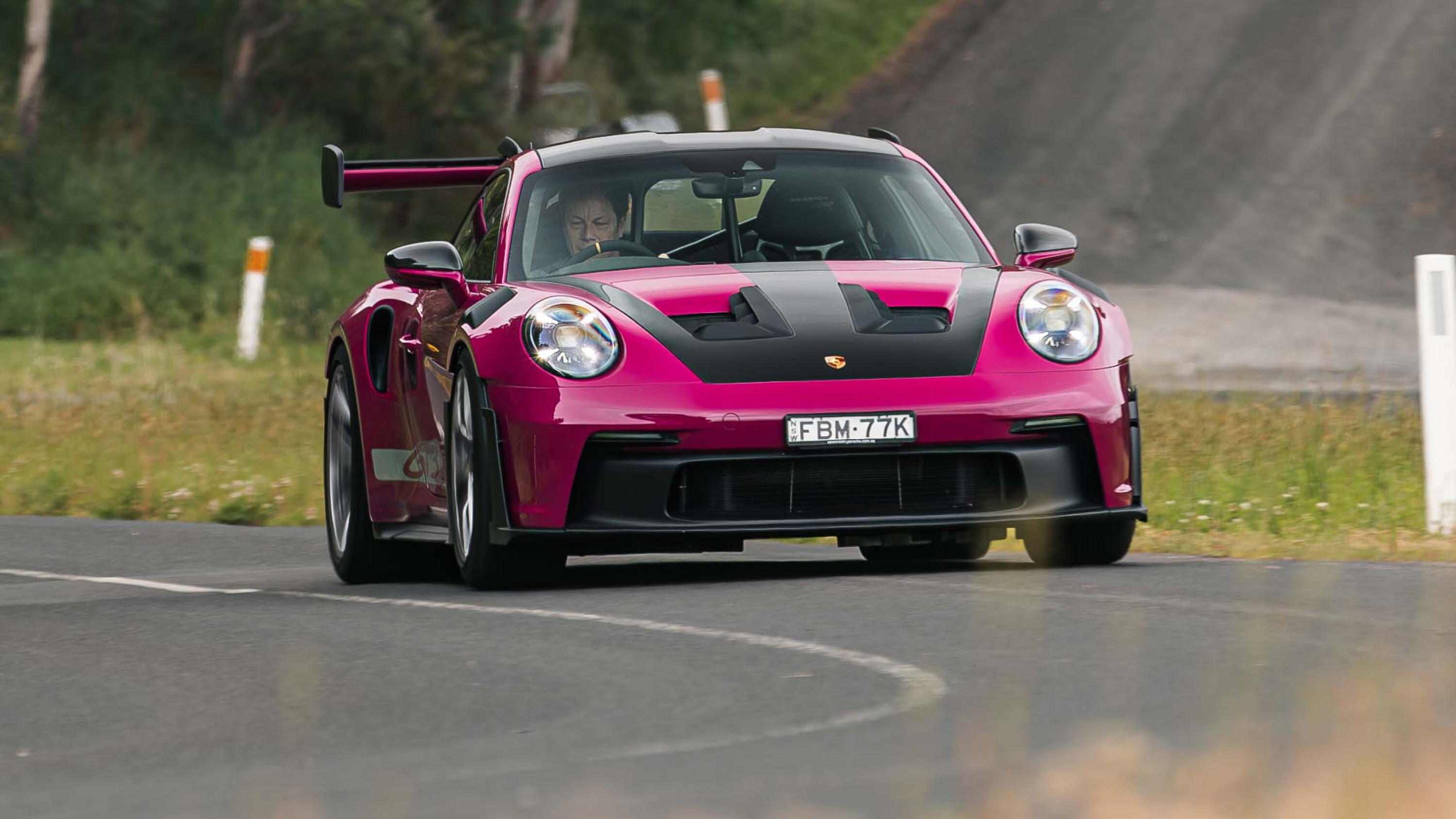
There’s also something deeply satisfying about the surgical precision and control you get from an atmo donk, which is doubly important in a car as unyielding as this.
You’d rightly expect the RS version to be lighter than a regular GT3 but oddly, it isn’t. Despite a body shell that’s made mostly from carbon-composite, and a horde of other weight-saving measures, the RS hits the scales at 1460kg. That’s 15kg more than a PDK GT3, which considering how many wings and flics the RS now carries, is actually pretty impressive.
So is Porsche’s bewinged monster too extreme for the street? No, it’s not, yet it’s abundantly clear a regular GT3 is a better road car. To properly unravel the ability of the RS, and to drive it in the way that it almost demands you to, you need a serious racing circuit.
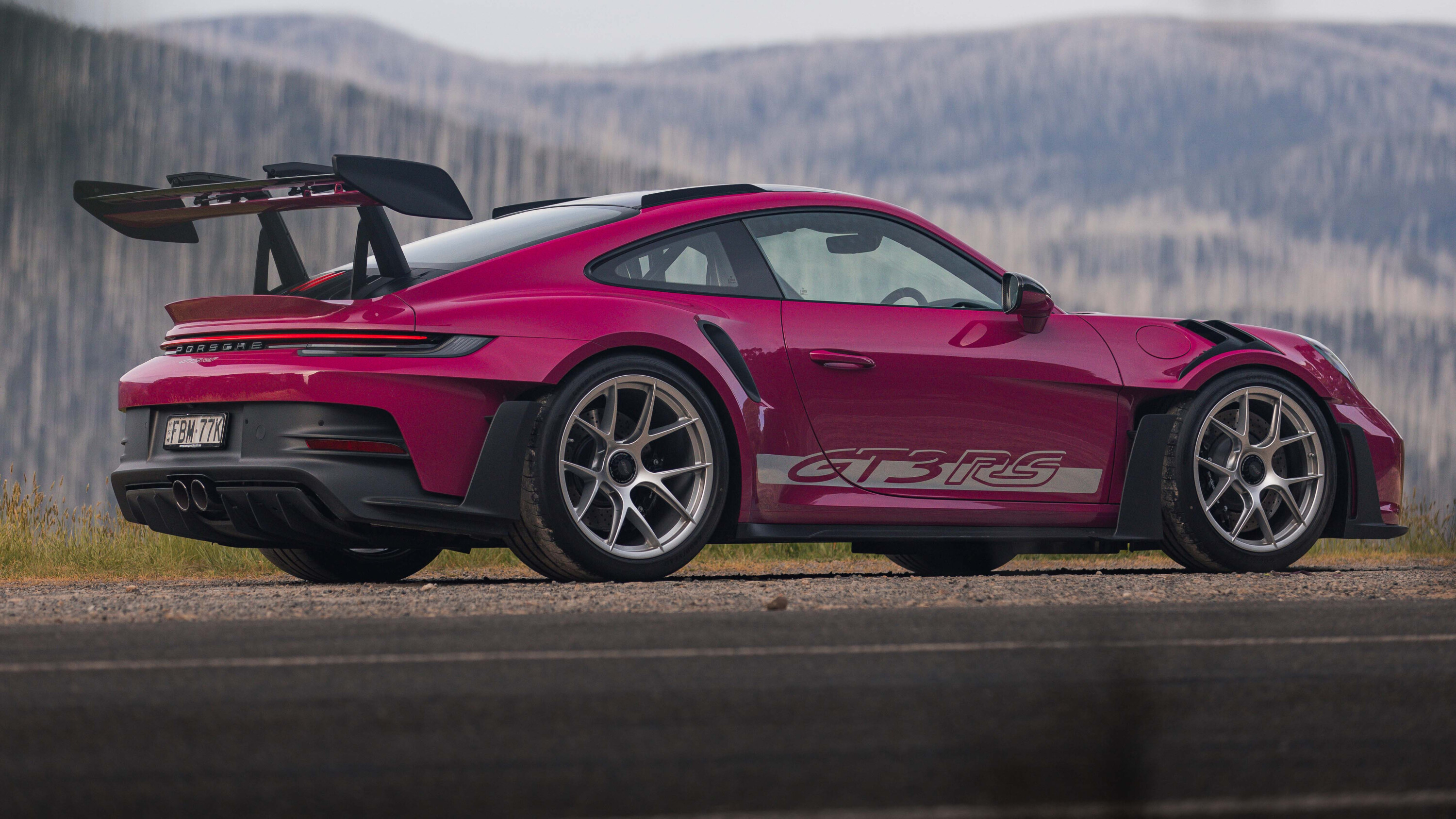
That’s also the place to better explore the settings for the diff, damping and aero, which is one aspect of the RS that does feel too extreme for the road. Beyond tweaking the dampers, we barely explored the rotary dials.
It’s a brute, this car; a machine that beats the air into submission and holds up a mirror to your driving ability. As for being a fish out a water? Nah. It’s good on the road. But it’d be phenomenal at a track.
| 2024 Porsche 992 GT3 RS | |
|---|---|
| Engine | 3996 flat 6, dohc, 24v |
| Power | 386kW @ 8500rpm |
| Torque | 465Nm @ 6300rpm |
| Transmission | 7-speed dual-clutch |
| Weight | 1460kg |
| 0-100km/h | 3.2sec (claimed) |
| Top speed | 296km/h |
| Price | $539,100 |
| On sale | Now |
Things we like
- Sheer driver focus
- Massive amounts of downforce and chassis configurability
- Looks and sounds completely unhinged
Not so much
- Track focus brings some compromises on the road
- $120K+ price rise over previous GT3 RS
- Needs a race circuit
We recommend
-
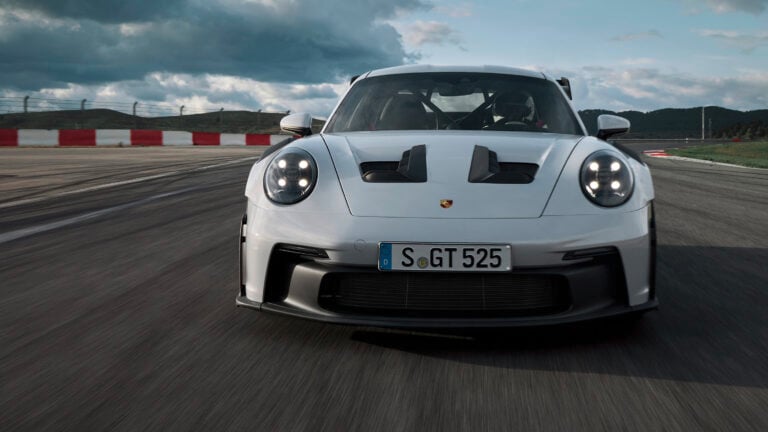 News
News2023 Porsche 911 GT3 RS revealed
More downforce than a McLaren Senna, a roll-cage made of plastic and super complex suspension. Porsche’s new race car for the road is bonkers
-
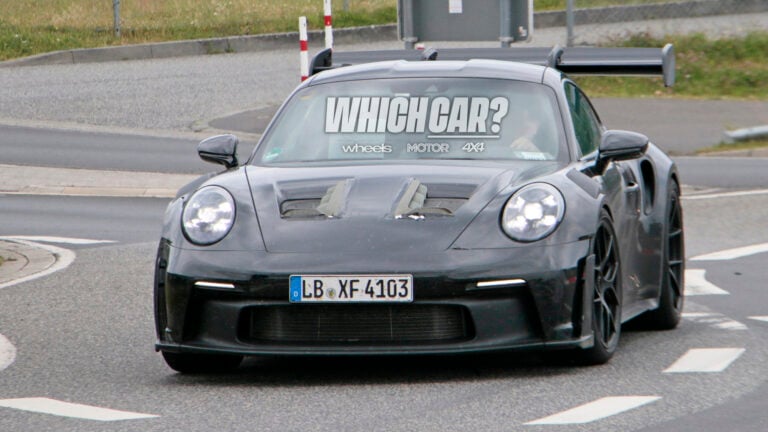 News
News2023 Porsche 911 GT3 RS spied testing at the Nürburgring, August reveal confirmed
The team at Weissach is making big changes for the 911 GT3 RS, confirming an August 18 debut for the wild variant
-
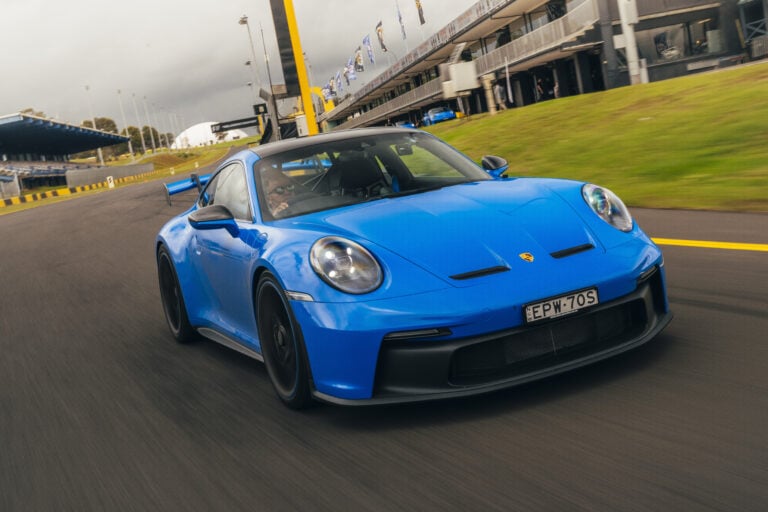 Reviews
ReviewsTrack Drive: 2022 Porsche 911 GT3 review
If ever a car could prove the devil’s in the detail, this is it






